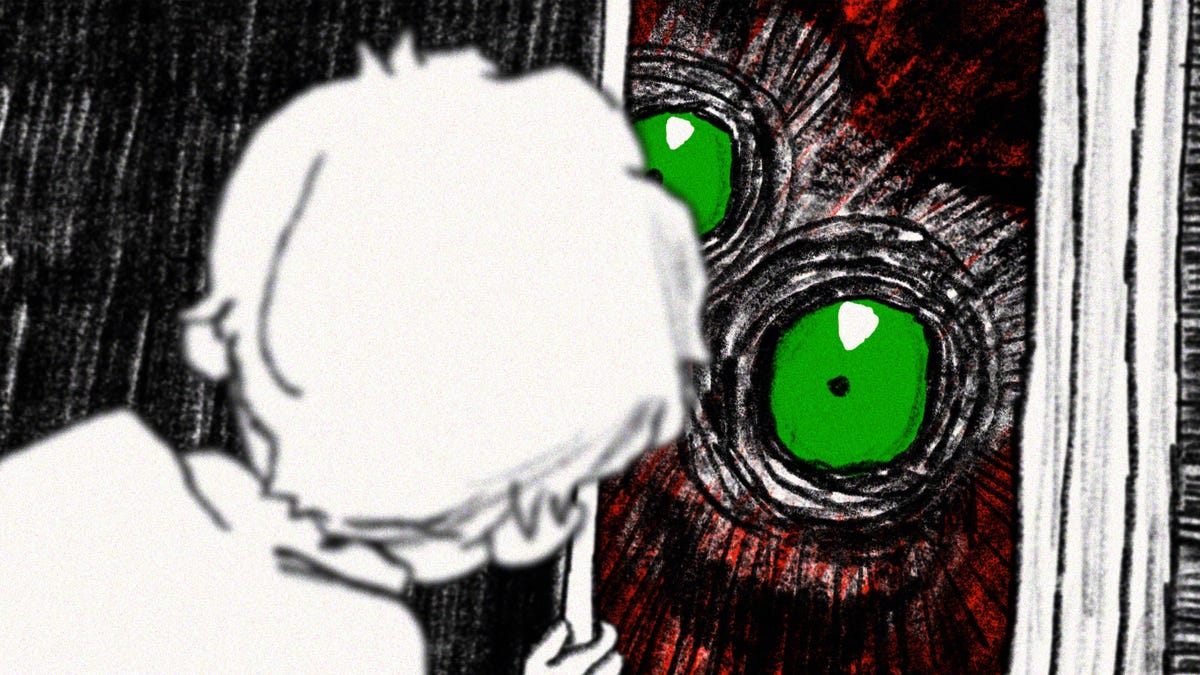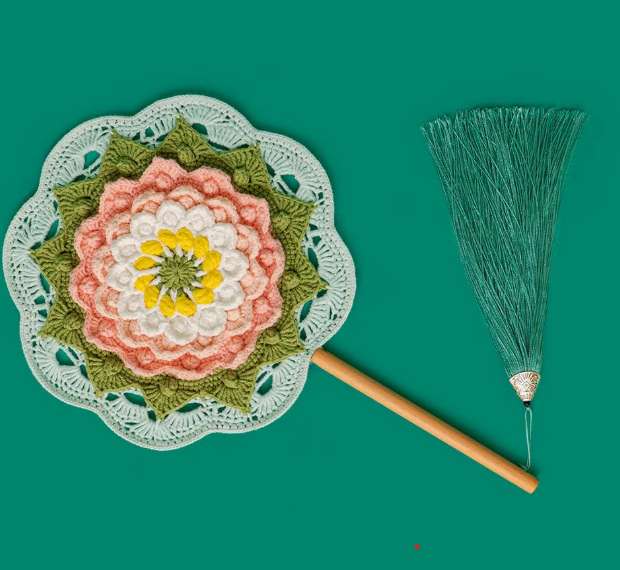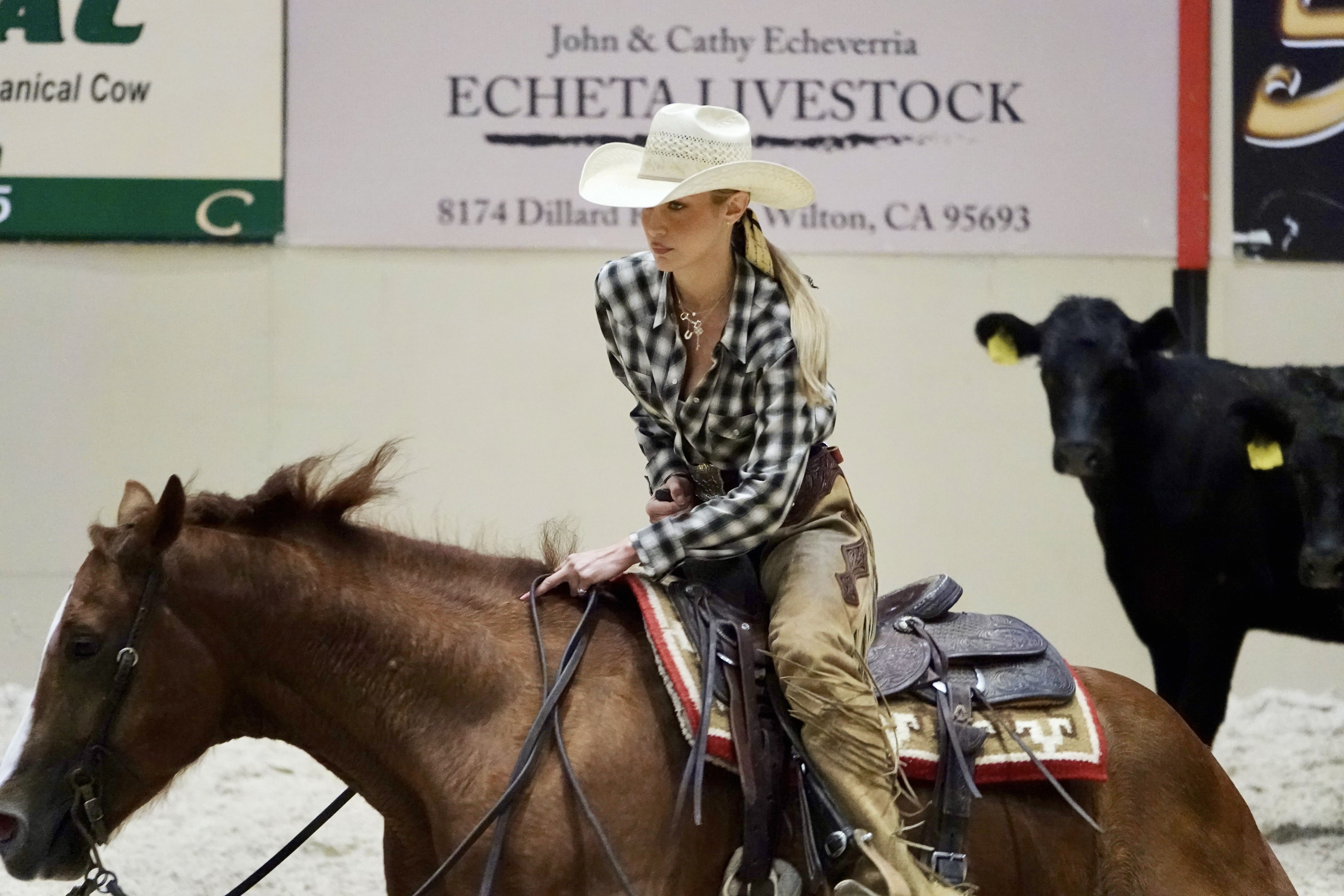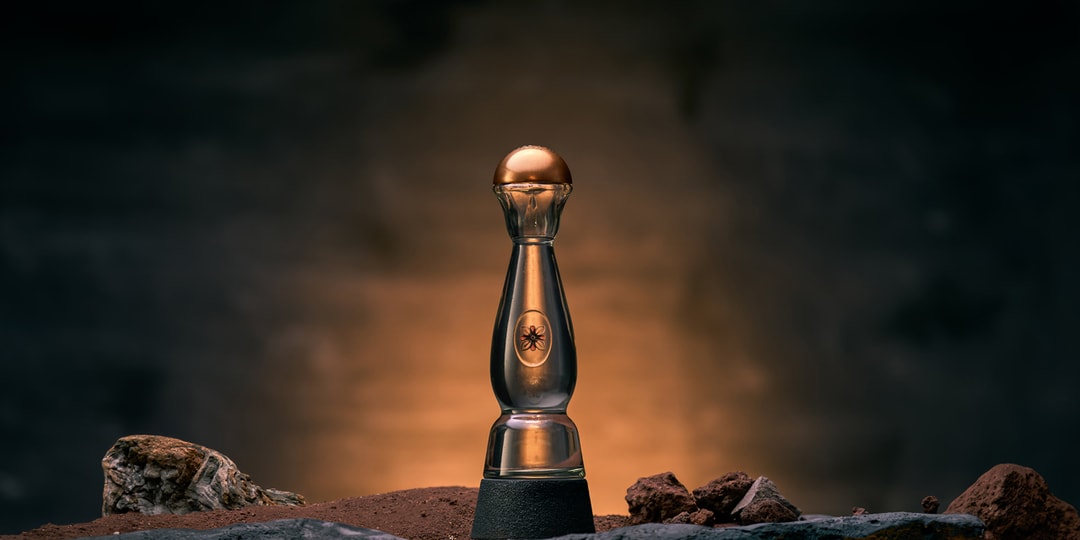The BigPicture 2025 winners capture unseen insect beauty and powerful animal encounters
Winners of the California Academy of Sciences' BigPicture: Natural World Photography Competition June 15 was Nature Photography Day, and in celebration of that, the winners of the annual California Academy of Sciences' BigPicture: Natural World Photography Competition were announced. The contest drew over 8,000 submissions from nearly 60 countries, capturing the stunning beauty of the natural world. Now in its 12th year, the BigPicture photography competition aims to "inspire awe and conservation through powerful imagery." The contest has seven categories: Photo Story; Aquatic Life; Art of Nature; Winged Life; Terrestrial Wildlife; Human/Nature; and Landscapes, Waterscapes, and Flora. A winner was selected for each category, along with six finalists and an overall Grand Prize winner. There will also be a People's Choice Award winner, with voting beginning on July 1 and ending on July 31. The jury for this year's competition included renowned wildlife photographer Suzi Eszterhas, editor Sophie Stafford and award-winning nature and conservation photographers and filmmakers Fernando Faciole, Britta Jaschinski, Anthony Ochieng Onyango, Peter Mather and Aishwarya Sridhar. You can see all of incredible the winning and finalist images at the BigPicture website. The annual BigPicture exhibit will open on Saturday, October 4, 2025, at the California Academy of Sciences in San Francisco, California. Additionally, the California Academy of Sciences and the American Museum of Natural History (AMNH) are working together to present a traveling exhibit on 2D panels that can be displayed in science centers, libraries, museums and other spaces. Grand Prize Winner Photographer: Donglin Zhou Title: Leap of Faith Award: Grand Prize Winner Photo location: Tsingy de Bemaraha Strict Nature Reserve, Madagascar Caption: Lemurs are remarkably lithe creatures. With long tails providing balance and powerful, slender limbs outfitted with opposable thumbs and toes, they move with ease through the craggy limestone spires of western Madagascar’s Tsingy de Bemaraha National Park. Still, leaping over a 30-meter (100-foot) ravine with a baby clinging to your back seems like a daring choice. To capture this scene, photographer Zhou Donglin had to do some mountaineering of her own. Setting out before sunrise, Donglin spent an hour scrambling to the top of a rocky peak, praying that the elusive brown lemurs (Eulemur fulvus) would show. After a day of disappointingly distant sightings, Donglin finally found some luck as a small troop descended through a forest of stone, glowing gold in the late evening light. In November, when this photo was taken, animals and plants in Tsingy de Bemaraha are nearing the end of a long dry season. After months of minimal rainfall, brown lemurs shift their diets from various fruits to the watery leaves of low-growing plants. This change comes at a vulnerable time for female lemurs, mere weeks after they’ve given birth. With their babies still nursing and unable to travel on their own, the mothers must strike out in search of sufficient water and nutrients—even if that quest requires a bold leap or two along the way. Aquatic Life Winner Photographer: Kat Zhou Title: My Octopus Mother Award: Aquatic Life Winner Photo location: West Palm Beach, Florida, United States Caption: Octopuses may be known for their ability to change color and shape, but their reproductive strategies are equally versatile. Some of the world’s 300 or so octopus species are monogamous, others polyamorous. Some mate beak to beak, sucker to sucker, while others prefer to keep their distance. Male blanket octopuses, for instance, load up a modified arm with sperm, then detach and pass it off to a female. Once they’ve mated, the females of some species deposit hundreds of thousands of tiny eggs that hatch into larvae and drift on ocean currents for weeks or months before metamorphosing into juveniles. The Caribbean reef octopus (Octopus briareus) pictured here, however, broods just a few hundred large eggs. Once she lays her eggs, the female stops eating and guards her growing offspring day and night. Her babies will emerge as fully developed, miniature versions of their parents, ready to change color, squirt ink, hunt for food, and live as small but full-fledged octopuses in the shallow seas around the Caribbean and Gulf of Mexico. Their mother, in contrast, having exhausted herself to ensure her offspring’s survival, will die shortly after they hatch. Photographer Kat Zhou was diving off the coast of Florida when friends alerted her to this female octopus and her eggs tucked into a pipe of some sort, perhaps a remnant of a shipwreck. Zhou returned four times, trying to capture the mother’s determination to protect her young when they’re most vulnerable. She hopes her work inspires empathy for marine life, including an animal whose behaviors differ wildly from our own but whose maternal instincts are entirely familiar. Aq

Winners of the California Academy of Sciences' BigPicture: Natural World Photography Competition
 |
June 15 was Nature Photography Day, and in celebration of that, the winners of the annual California Academy of Sciences' BigPicture: Natural World Photography Competition were announced. The contest drew over 8,000 submissions from nearly 60 countries, capturing the stunning beauty of the natural world.
Now in its 12th year, the BigPicture photography competition aims to "inspire awe and conservation through powerful imagery." The contest has seven categories: Photo Story; Aquatic Life; Art of Nature; Winged Life; Terrestrial Wildlife; Human/Nature; and Landscapes, Waterscapes, and Flora. A winner was selected for each category, along with six finalists and an overall Grand Prize winner. There will also be a People's Choice Award winner, with voting beginning on July 1 and ending on July 31.
The jury for this year's competition included renowned wildlife photographer Suzi Eszterhas, editor Sophie Stafford and award-winning nature and conservation photographers and filmmakers Fernando Faciole, Britta Jaschinski, Anthony Ochieng Onyango, Peter Mather and Aishwarya Sridhar.
You can see all of incredible the winning and finalist images at the BigPicture website. The annual BigPicture exhibit will open on Saturday, October 4, 2025, at the California Academy of Sciences in San Francisco, California. Additionally, the California Academy of Sciences and the American Museum of Natural History (AMNH) are working together to present a traveling exhibit on 2D panels that can be displayed in science centers, libraries, museums and other spaces.
Grand Prize Winner
 |
Photographer: Donglin Zhou
Title: Leap of Faith
Award: Grand Prize Winner
Photo location: Tsingy de Bemaraha Strict Nature Reserve, Madagascar
Caption: Lemurs are remarkably lithe creatures. With long tails providing balance and powerful, slender limbs outfitted with opposable thumbs and toes, they move with ease through the craggy limestone spires of western Madagascar’s Tsingy de Bemaraha National Park. Still, leaping over a 30-meter (100-foot) ravine with a baby clinging to your back seems like a daring choice.
To capture this scene, photographer Zhou Donglin had to do some mountaineering of her own. Setting out before sunrise, Donglin spent an hour scrambling to the top of a rocky peak, praying that the elusive brown lemurs (Eulemur fulvus) would show. After a day of disappointingly distant sightings, Donglin finally found some luck as a small troop descended through a forest of stone, glowing gold in the late evening light.
In November, when this photo was taken, animals and plants in Tsingy de Bemaraha are nearing the end of a long dry season. After months of minimal rainfall, brown lemurs shift their diets from various fruits to the watery leaves of low-growing plants. This change comes at a vulnerable time for female lemurs, mere weeks after they’ve given birth. With their babies still nursing and unable to travel on their own, the mothers must strike out in search of sufficient water and nutrients—even if that quest requires a bold leap or two along the way.
Aquatic Life Winner
 |
Photographer: Kat Zhou
Title: My Octopus Mother
Award: Aquatic Life Winner
Photo location: West Palm Beach, Florida, United States
Caption: Octopuses may be known for their ability to change color and shape, but their reproductive strategies are equally versatile. Some of the world’s 300 or so octopus species are monogamous, others polyamorous. Some mate beak to beak, sucker to sucker, while others prefer to keep their distance. Male blanket octopuses, for instance, load up a modified arm with sperm, then detach and pass it off to a female.
Once they’ve mated, the females of some species deposit hundreds of thousands of tiny eggs that hatch into larvae and drift on ocean currents for weeks or months before metamorphosing into juveniles. The Caribbean reef octopus (Octopus briareus) pictured here, however, broods just a few hundred large eggs. Once she lays her eggs, the female stops eating and guards her growing offspring day and night. Her babies will emerge as fully developed, miniature versions of their parents, ready to change color, squirt ink, hunt for food, and live as small but full-fledged octopuses in the shallow seas around the Caribbean and Gulf of Mexico. Their mother, in contrast, having exhausted herself to ensure her offspring’s survival, will die shortly after they hatch.
Photographer Kat Zhou was diving off the coast of Florida when friends alerted her to this female octopus and her eggs tucked into a pipe of some sort, perhaps a remnant of a shipwreck. Zhou returned four times, trying to capture the mother’s determination to protect her young when they’re most vulnerable. She hopes her work inspires empathy for marine life, including an animal whose behaviors differ wildly from our own but whose maternal instincts are entirely familiar.
Aquatic Life Finalist
 |
Photographer: Georgina Steytler
Title: Puddle Jumper
Award: Aquatic Life Finalist
Photo location: Goode Beach, Australia
Caption: No fish are graceful on land. But amphibious mudskippers do their best. Using their flexible front fins, mudskippers wrench themselves across intertidal mudflats, over rocks, and even up the trunks of mangrove trees. To survive on land, mudskippers have skin and mouths lined with mucus that allows them to absorb oxygen from the air, along with a unique gill chamber that can be filled with seawater—like a reverse scuba tank. Together, these adaptations allow mudskippers to spend most of their lives on land.
It’ll take more than bouncing between land and water, however, for this male blue-spotted mudskipper (Boleophthalmus caeruleomaculatus) to impress potential mates. Erecting his sail-like, iridescent dorsal fin, the mudskipper wriggles his stout tail and launches himself into the air before falling back to Earth with an unceremonious plop. Females are typically wooed by the highest jumper, a sign that a would-be mate will be strong enough to defend the muddy burrow where she will eventually deposit her eggs.
To capture this moment, photographer Georgina Steytler spent hours in the mud over the course of several days. She took thousands of photos before getting this mudskipper perfectly midflight. But Steytler says the effort was well worth it to highlight "how remarkable these little fish are—a true cross between aquatic and terrestrial life."
Art of Nature Winner
 |
Photographer: Sandra Bartocha
Title: Unwavering Energy
Award: Art of Nature Winner
Photo location: Rügen, Germany
Caption: When wind blows across the ocean’s surface, it forms a wave. A single wave can travel thousands of kilometers before breaking on land; for example, some waves generated off the coast of New Zealand roll all the way to the West Coast of North America, taking up to two weeks to reach their final destination. And while small waves can move as slowly as 8 kilometers (5 miles) per hour, tsunamis in the middle of the Pacific Ocean reach speeds of 965 kilometers (600 miles) per hour.
As they move across the planet, waves transport nutrients, plankton, and other building blocks of marine life. They also carry larger animals, including baby sea turtles, who use waves to orient themselves perpendicular to the shore as they push out to sea after hatching on beaches. People, too, use waves to navigate. Some Pacific Islanders are reviving a traditional practice called wave piloting, in which navigators chart a course in part by feeling the waves beneath their boat.
Waves also impact life on land, tossing sediment onto shore that eventually becomes beaches and dunes where shorebirds and other wildlife find refuge. In Germany, where photographer Sandra Bartocha made this long-exposure image at sunrise, waves deposit up to 4 meters (13 feet) of sand per year in some locations and erode more than 2 meters (nearly 8 feet) per year in others. Whether waves give or take, their impact on the world’s oceans is, shall we say, unwavering.
Art of Nature Finalist
 |
Photographer: Ellen Woods
Title: Cosmic Chlorophyll
Award: Art of Nature Finalist
Photo location: Sea Isle City, New Jersey, United States
Caption: A small jetty rock nestled in the sand and shell fragments amid the ocean's surf is exposed with ultraviolet light to create a celestial scene. The rock's red fluorescence is caused by chlorophyllic Green algae (Green alga), and while this ethereal image is incredible to behold, it also allows us to spotlight the often overlooked marine algae, which actually plays a vital role in coastal ecosystems. As primary producers, they form the foundation of the food web, directly feeding herbivores and indirectly supporting higher trophic levels (e.g., secondary consumers). Algal mats also provide microhabitats for small invertebrates, offering shelter from predators and protection from desiccation during low tide.
Human/Nature Winner
 |
Photographer: Ami Vitale
Title: Rhino Rebound
Award: Human/Nature Winner
Photo location: Ol Pejeta Conservancy, Kenya
Caption: In January 2024, officials from the Kenya Wildlife Service undertook a massive mission: translocating 21 black rhinoceroses (Diceros bicornis) to a region where they hadn’t lived for half a century. Black rhinos can weigh as much as a small sedan and are known to gore people, which makes moving them a daunting task. But when Kenya’s 16 existing rhino sanctuaries became too crowded, officials had little choice.
That black rhinos are suffering from overcrowding is one sign of an improbable success. Kenya’s black rhino population plummeted from 20,000 individuals in the 1970s to fewer than 300 by the 1980s, mirroring the species’ plight across central and eastern Africa as poachers killed the animals for their horns. Today, the International Union for Conservation of Nature (IUCN) lists black rhinos as critically endangered, but government intervention in Kenya has led to a modest rebound. Thanks to anti-poaching enforcement and large-scale sanctuaries, Kenya is almost halfway to reaching its goal of harboring 2,000 wild rhinos.
Yet moving such powerful animals can be dangerous for both rhinos and their human caretakers. Photographer Ami Vitale was documenting the translocation of this female from the OI Pejeta Conservancy in central Kenya to the Loisaba Conservancy in the north when the rhino reacted poorly to anesthesia and stopped breathing. Veterinarians and handlers initiated a special resuscitation for large animals and administered drugs to reverse the effects of the anesthetic, saving the animal’s life. Vitale says this image—captured the moment the rhino recovered—speaks to the danger that people are willing to face to bring back an imperiled species.
Human/Nature Finalist
 |
Photographer: Ringo Chiu
Title: Escape From The Hell Of Fire
Award: Human/Nature Finalist
Photo location: Cherry Valley, California, United States
Caption: A Deer mouse (Peromyscus maniculatus) scampers to safety as flames flare behind it. This image was taken at the Apple Fire, a wildfire that ignited in northwest Palm Springs in August 2020, and paints a vivid picture of nature’s vulnerability in the face of disaster. The stark contrast between this creature’s desperate escape and the raging wildfire makes this tiny mouse a symbol of survival against overwhelming odds. The photographer hopes viewers take away the fragility of wildlife in wildfires, as well as the urgency of addressing environmental challenges, especially as extreme heat and fires become more frequent.
Landscapes, Waterscapes, & Flora Winner
 |
Photographer: Marcin Giba
Title: Icy Stare
Award: Landscapes, Waterscapes, & Flora Winner
Photo location: Rybnik, Poland
Caption: Not long ago, it would have been nearly impossible for photographer Marcin Giba to take this image of a fissure on a foot-marked frozen lake in the southern Polish city of Rybnik—and it could become impossible again. Rybnik is one of Poland’s largest producers of coal, and with that abundance has come rampant consumption. Until recently, most homes and residential buildings burned coal for heat, cloaking the city in a thick layer of pollution and giving it the unenviable title of the "smog capital of Poland." In 2010 alone, Rybnik experienced 130 days where the pollution was both hazardous and visible to the naked eye. Needless to say, such smoggy conditions aren’t conducive to the kind of drone-based photography that Giba uses in his work.
Fed up with the government’s inaction, a group of residents created Polish Smog Alert, an advocacy organization pushing for legislation to suppress the smog. Since their formation a decade ago, the group has helped enact policies that have replaced nearly 10,000 coal boilers across the city. As a result, Rybnik experienced just 16 smog days in 2023.
Even so, more will have to be done in Rybnik and elsewhere to ensure Giba’s icy eye doesn’t wink out of existence for good. With climate change, Rybnik has experienced 11 years of above-average winter temperatures, leading to scarcer snowfall and fewer frozen lakes each year. "The kind of winter I remember from my childhood—cold and white—is becoming increasingly rare," Giba says. "I feel that I’m documenting a vanishing beauty."
Landscapes, Waterscapes, & Flora Finalist
 |
Photographer: Ellen Woods
Title: Early Bloomer
Award: Landscapes, Waterscapes, & Flora Finalist
Photo location: Middleton, Connecticut, United States
Caption: Winters in the northeastern United States are long, cold, and often snowy, so the first signs of spring are a welcome sight. Skunk cabbage (Symplocarpus foetidus) is often one of the earliest plants to emerge, thanks to a unique characteristic: It creates its own microclimate, warming itself to about 23 degrees Celsius (73 degrees Fahrenheit) even when the surrounding air is below freezing.
Skunk cabbage accomplishes this through a process known as thermogenesis, or the ability to metabolically generate heat. This trait allows the plant to melt the snow around it and bloom far earlier than the competition. Across much of eastern North America, from Tennessee through Nova Scotia, skunk cabbage emerges before the vernal equinox in mid-March, pushing out of the snow and frozen mud like some primordial progenitor of the warmer weather to come.
As its name suggests, skunk cabbage flowers give off a musky odor that attracts carrion-eating flies and gnats. Bees and other insects also visit to take advantage of its warmth. Then they fly off, carrying pollen to another plant to fertilize its spadix, a fleshy spike covered in small, petal-less flowers. Come summer when other flowering flora are busy competing for pollinators’ attention, skunk cabbage has already parted with its pollen and replaced its early blooming flowers with a bouquet of showy leaves.
Despite these remarkable adaptations, skunk cabbage tends to be underappreciated—which is precisely what drew Ellen Woods to this specimen near her home in Connecticut. Woods hopes her photograph not only calls attention to the region’s overlooked flora but also highlights the cold tolerance of a native species in a region where snowfall is becoming increasingly unreliable.
Terrestrial Wildlife Winner
 |
Photographer: Amit Eshel
Title: Part of the Pack
Award: Terrestrial Wildlife Winner
Photo location:
Caption: Reaching Ellesmere Island, in Canada’s far north, is an adventure of its own. It took six domestic flights for Israeli photographer Amit Eshel to get within striking distance, and then days of traveling by dogsled and snowmobile to make it to the northern part of the island. Eshel undertook the journey in hopes of spotting Ellesmere’s wolves, which have no known history of being hunted and are unafraid of the few human visitors they encounter. Yet only about 200 Arctic wolves (Canis lupus arctos) live on Ellesmere, which is roughly the size of Great Britain, and during Eshel’s first visit in April 2022, he and his Inuit guides searched for two weeks without finding them.
He tried again in 2024. This time, 12 days into the expedition, his group was moving across a frozen fjord in -35 degrees Celsius (-31 Fahrenheit) temperatures when they spotted a single wolf through binoculars. Eight more soon appeared, and the pack moved slowly toward Eshel. "I laid down holding my camera with a wide lens and they came over for a very close look," he says. "At times they were so close they almost touched me, and I could smell their breath."
Eshel says he hopes the resulting composition imparts a sense of what it felt like to briefly be part of the pack. He also hopes it illustrates the playfulness of these oft-feared predators—particularly in a place where human persecution hasn’t compromised their natural curiosity.
Terrestrial Wildlife Finalist
 |
Photographer: Sitaram Raul
Title: Nightclub
Award: Terrestrial Wildlife Finalist
Photo location: Badlapur, India
Caption: A colorful shot of an Indian red scorpion (Hottentotta tamulus) resting on a log with sporing fungi. The fantastical colors are the various fungi spores—which emit their own unique color—lit by a camera flash, while the scorpion is illuminated by ultraviolet light, making for an artfully executed image.
Winged Life Winner
 |
Photographer: Dvir Barkay
Title: Tiny Tent Makers
Award: Winged Life Winner
Photo location: Near La Selva Biological Station, Costa Rica
Caption: Bats are not ordinarily known for their cuteness. Then again, the Honduran white bat (Ectophylla alba) is no ordinary bat. One of the smallest fruit-eating bats in the world, it’s roughly the size of a golf ball and the weight of a quarter. Even with its wings outstretched, the diminutive species only reaches around 10 centimeters (4 inches). But it’s not only the bat’s stature that’s unique. It’s also one of the few species that makes tents in which to roost.
After finding a suitably large Heliconia leaf 2 meters (6 feet) or so off the ground, the bats work as a team, biting from the edges toward the midrib until the foliage falls in on itself, forming a simple tent that resembles an upside-down V. Groups of four to six bats will nestle together in these verdant shelters to rest until nightfall, when they venture out to find their preferred food: figs. Though they only stay in any given tent for a night or two, they leave their mark in the form of seed-packed feces that can sprout into new trees. Indeed, Honduran white bats don’t just build their own shelters—they also help shape the forests they inhabit.
Winged Life Finalist
 |
Photographer: Minghui Yuan
Title: Moth Magic
Award: Winged Life Finalist
Photo location: Xishuangbanna, China
Caption: There’s no more vulnerable time for a moth than the weeks—sometimes years—it spends as a chrysalis. But it helps if you suspend yourself in a cage-like cocoon made of spines. As caterpillars, Cyana spp moths are covered in serrated, hair-like bristles called setae to deter would-be predators. When it comes time to metamorphose, Cyana caterpillars work with what they have, using their own setae to weave a protective fort. Where two setae meet, the intersection is wrapped tightly with sticky silk from glands near the caterpillar’s mouth.
The structure is flexible yet sturdy enough to retain its shape when prodded; one researcher describes the feeling as that of a fine mesh sieve. Once secured inside, the caterpillars use their silk to hoist themselves to the middle of the cage to begin their transformation.
No one knows exactly how Cyana caterpillars build their spiky cells. While the caterpillars are remarkably flexible and have powerful front legs and jaws, it’s still difficult to imagine how they could construct such an intricate shelter. Researchers have discovered, however, how they pull off their last trick: escaping from their seemingly sealed cages. Each end of the oblong cage is left unwoven, creating a one-way gate like the traffic spikes at the exits of parking garages. By orienting themselves along the center axis, the caterpillars ensure that when they emerge as a moth, all they have to do is push through the cage and fly away, leaving behind an intact chrysalis suspended in midair.
Photo Story: In My Backyard
 |
Photographer: Takuya Ishiguro
Title: The World of Familiar Insects
Award: Photo Story: In My Backyard Winner
Photo location: Various Locations, Japan
Caption: It’s an undeniable fact that insects live close to humans at all times, but sometimes they are so small we may not even notice them. And even when we do notice them, they’re often met with disgust and derision. In this series taken in the photographer's native Japan, we’re given an unexpected look into the lives of bugs, wherein the photographer uses his own customized lens to capture unique, up-close images of diversely colorful and impressive species. In this image, we’re shown the unexpected beauty of a Common housefly (family Muscidae) as it shines like a jewel while covered in morning dew. Unfortunately, it won’t be able to fly off until the dew drops evaporate and it completely dries off, making it the perfect portrait specimen.































































































































































































































































